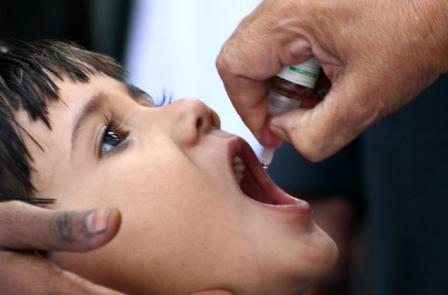New Delhi: India has reason to smile on the polio front, especially on Jan 13. Not only will it achieve a big milestone of no new case for a year, there are also indications that the World Health Organisation (WHO) will remove it from its list of polio endemic countries by February.
Experts, however, caution that the fight against the paralysing disease that affects children aged under five is far from over.
“We are extremely happy on meeting this great milestone. The progress is greatly encouraging,” says Anuradha Gupta, joint secretary in the union health ministry.
“We are aware of the risks that still persist. We cannot drop our guard. We need to work hard to make sure that in the next two years India stays polio free, stop indigenous transmission and also importation.”
The last new polio case in India was reported Jan 13, 2011, involving a two-year-old girl in West Bengal. In 2010, there were 42 cases, as compared to 741 in 2009, which accounted for nearly half of the world’s polio cases. In 1991, there were 6,028 cases and in 1985 it was 150,000.
What worked was that each state prepared itself for detecting and immediately responding to any wild poliovirus through their ‘Emergency Preparedness and Response Plans’.
The entire health ministry – at the centre and in the states – was geared to take up the challenge.
Immunisation in itself was a mammoth job, involving thousands of people. And immunisations were carried out across the country, especially in the worst affected parts of Uttar Pradesh and Bihar.
Poliovirus is mostly transmitted through contact with the stool of an infected person but also through contact with infected respiratory secretions or saliva, experts say.
During each national immunization day, nearly 2.3 million vaccinators under the direction of 155,000 supervisors visited 209 million homes to administer the Oral Polio Vaccine (OPV) to around 172 million children under five years of age across the country.
To reach the migratory population, mobile vaccination teams immunised children at railway stations, inside running trains, at bus stands, market places and construction sites. The end result was 900 million children were given OPV doses last year.
India’s success also earned it praise from Microsoft co-founder Bill Gates who described it as “a major milestone in the history of the global health sector” for not reporting any case in a 12-month period.
“The Indian government provided the required financial support for polio eradication, 20 lakh volunteers set up eight lakh vaccination centres in schools, hospitals and community centres on two occasions last year,” he said in his blog.
The government is partnered in its fight by WHO’s National Polio Surveillance Project (NPSP), Rotary International, the US Centers for Disease Control and Prevention (CDC) and Unicef, as well as the Bill and Melinda Gates Foundation.
What has cheered officials more is that if all testing for indigenous wild poliovirus transmission through January this year, including laboratory analysis of acute flaccid paralysis cases and environmental sewage sampling, is negative, India will officially be deemed to have stopped the indigenous virus and be removed from the list of WHO polio-endemic countries by mid-February.
But experts say there should be no let-up in vigilance.
“India should be most concerned about complacency, which can undo a lot of the strong progress that has been achieved,” said Hamid Jafari, the project manager of the WHO-National Polio Surveillance Project (NPSP).
“Maintaining high vigilance, the intensity of the programme and emergency preparedness will be crucial,” he said.
Added Lieven Desomer, chief of Polio Unit in Unicef in India: “As we get closer to polio eradication, the greatest risk to the programme is any kind of complacency.”
“Now is the time to be extremely vigilant and continue to protect children against polio through campaigns and routine immunization. We need to urgently strengthen and boost routine immunization across the country to prevent any case of importation resulting in a huge outbreak,” he said.
However, there is a fear of importing the virus from other countries, including Pakistan.
“India has made great strides this year, but the increasing incidence of polio from across the border means India is still at risk and faces harsh challenges to remain polio-free,” said Deepak Kapur, chairman of the Rotary International PolioPlus Office.
“Emergency response teams are being put together in each state and cross-border immunization efforts are under way, particularly across the border with Pakistan and Nepal,” Kapur said.
IANS



